What Flower Symbolizes Good Luck? Clover, Lotus!
If you’re seeking a flower that symbolizes good luck, you’ve got many choices. Flowers like the clover, lotus, peony, chrysanthemum, and even certain orchids such as Phalaenopsis and Dendrobium are renowned for their lucky charms.
These blooms aren’t just pretty faces; their luck-bringing reputation stems from unique biological traits, historical significance, and roles in cultural rituals.
For instance, the lotus is celebrated for purity, success, and spiritual awakening, while the jasmine is praised for prosperity and its soothing fragrance. Cultures across the globe have long believed in the power of these plants to influence fortunes positively.
Exploring their stories uncovers deeper insights into how luck and beauty intertwine in the natural world.
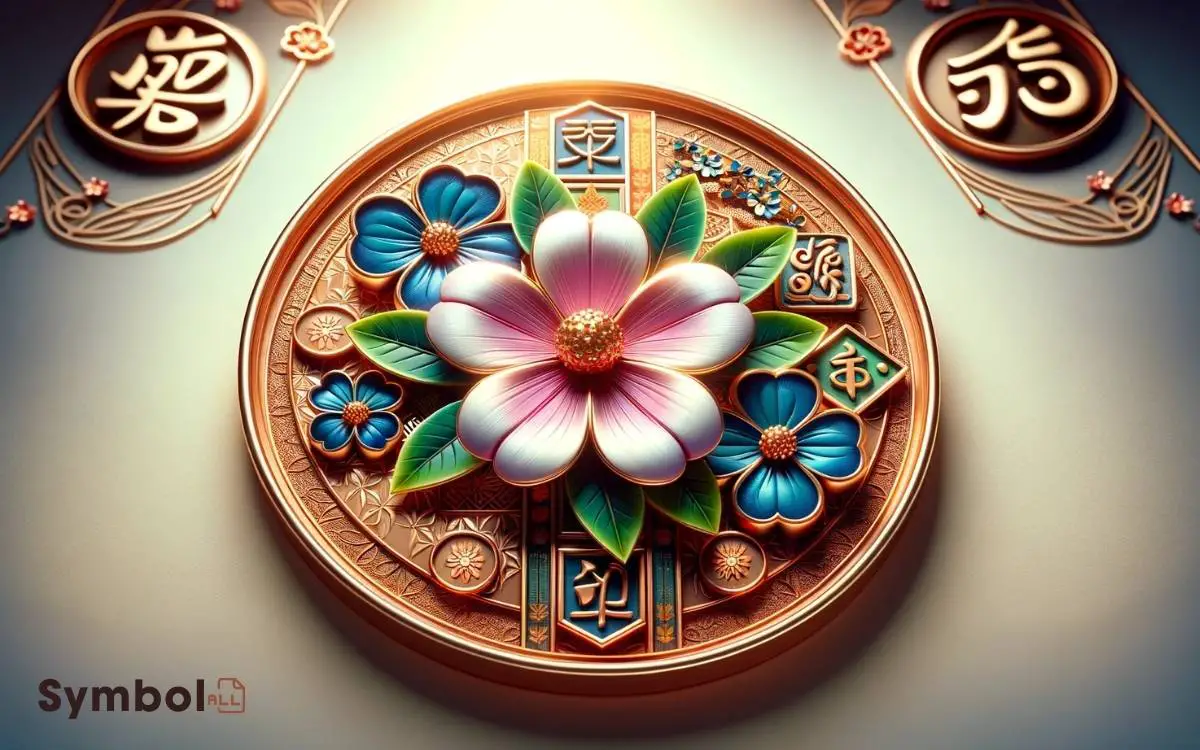
Key Takeaways
The Power of Flowers
Throughout history, flowers have served as potent symbols in various cultural, spiritual, and scientific contexts, embodying a diverse range of meanings and effects on human behavior and emotions. From ancient traditions to modern interpretations, flowers have conveyed messages of love, hope, and renewal, often transcending language barriers. The sunflower symbol for good health, for example, is recognized across many societies, with its vibrant yellow petals evoking feelings of vitality and positivity. Whether in art, literature, or medicine, flowers continue to inspire and nurture the human spirit in profound ways.
Scientifically, it’s been established that flowers can notably impact psychological well-being, enhancing mood, reducing stress, and even improving memory and concentration through their colors, scents, and aesthetic appeal.
Culturally, different societies have attributed specific flowers with unique symbols of luck, love, mourning, or celebration, deeply ingrained in their traditions and rituals.
This symbiosis between humans and flowers showcases a profound understanding of nature’s influence on emotional and cognitive states, highlighting flowers’ power to communicate messages, evoke feelings, and even alter perceptions, without the utterance of a single word.
Unveiling the Lucky Bloom
As you explore the concept of the lucky bloom, you’ll uncover its origins, tracing back to ancient traditions where certain flowers were deemed fortuitous.
You’ll also learn about the cultural significance these blooms hold across various societies, illustrating how they symbolize prosperity and good fortune.
Lastly, modern practices surrounding these lucky flowers will be explained, showcasing their continued relevance in contemporary rituals and celebrations.
Origins of Lucky Flower
Delving into the history of the lucky flower reveals a complex tapestry of cultural beliefs and botanical significance that spans across various civilizations.
The inception of a flower’s association with good fortune isn’t merely a happenstance but often stems from its unique biological traits or rarity in nature.
For instance, some flowers might’ve been deemed lucky due to their resilience in harsh climates, symbolizing strength and perseverance. Others were valued for their medicinal properties, offering health and as a result, considered bearers of good luck.
These attributions weren’t made in isolation but were a result of careful observation and reverence for nature’s marvels.
This evolutionary intertwining of human beliefs and the botanical world has endowed certain flowers with a status that transcends mere aesthetics, embedding them deeply in the lore of luck.
Cultural Significance
Exploring the cultural significance of lucky blooms reveals how societies, across different epochs, have woven these flowers into their rituals, myths, and daily practices, highlighting their pivotal role in human celebrations and beliefs.
These plants aren’t merely decorative; they’re imbued with layers of meaning, often serving as symbols of prosperity, fertility, or protection against negative forces.
Researchers have documented instances where specific flowers, due to their unique characteristics or historical anecdotes associated with them, have become integral to cultural identities.
They’re not only used in traditional ceremonies but also in personal milestones such as weddings, births, and funerals, signifying a universal language of hope and well-being.
This deep-rooted association underscores the enduring belief in the power of these lucky blooms to influence human fortunes positively.
Modern Practices Explained
Building on the historical roots of lucky blooms, we now examine how contemporary practices continue to incorporate these flowers, reflecting their enduring appeal and significance in modern contexts.
Today’s rituals and customs surrounding these flowers underscore their symbolic meanings in new and innovative ways.
| Flower | Modern Usage | Significance |
|---|---|---|
| Clover | Garden Planting | Hope and Renewal |
| Lotus | Spa and Wellness Decorations | Purity and Enlightenment |
| Peony | Wedding Bouquets | Romance and Prosperity |
| Chrysanthemum | Lunar New Year Celebrations | Longevity and Good Fortune |
| Jade Vine | Conservation Efforts | Endurance and Environmental Awareness |
This table encapsulates the integration of these lucky blooms into contemporary life, showcasing their adaptability and the deep-rooted beliefs that continue to guide their use.
Clover: Natures Good Luck Charm
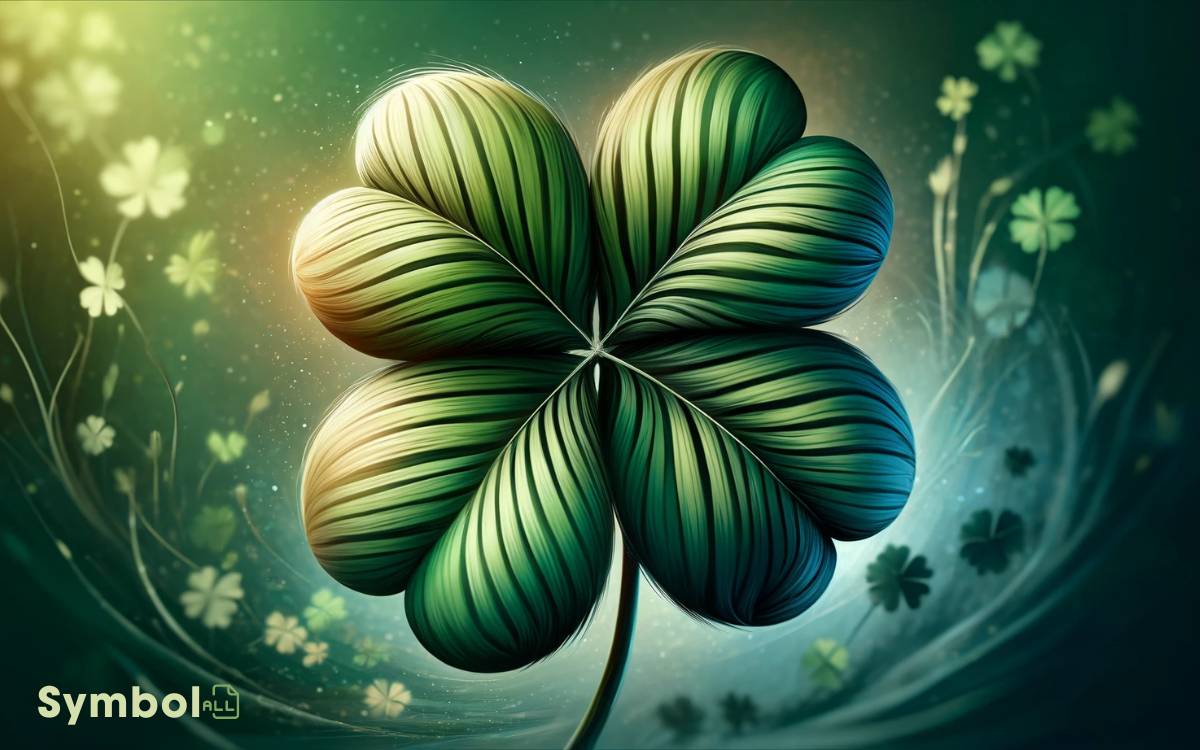
Clover, often seen as nature’s good luck charm, thrives in various environments, symbolizing fortune and prosperity. This plant, belonging to the genus Trifolium, consists of over 300 species, each with its unique characteristics.
The most iconic, the four-leaf clover, is a rare variation that occurs due to a genetic mutation. It’s this significance, found in approximately 1 in 5,000 clovers, which contributes to its status as a symbol of good luck.
Scientifically, clovers are vital nitrogen-fixing plants, playing an essential role in soil health and agricultural ecosystems. They attract beneficial insects and promote biodiversity.
Understanding clovers from a botanical standpoint reveals why they’re not just symbols of luck but also pivotal ecological players, enhancing the environments they inhabit.
Peony: Prosperitys Petals
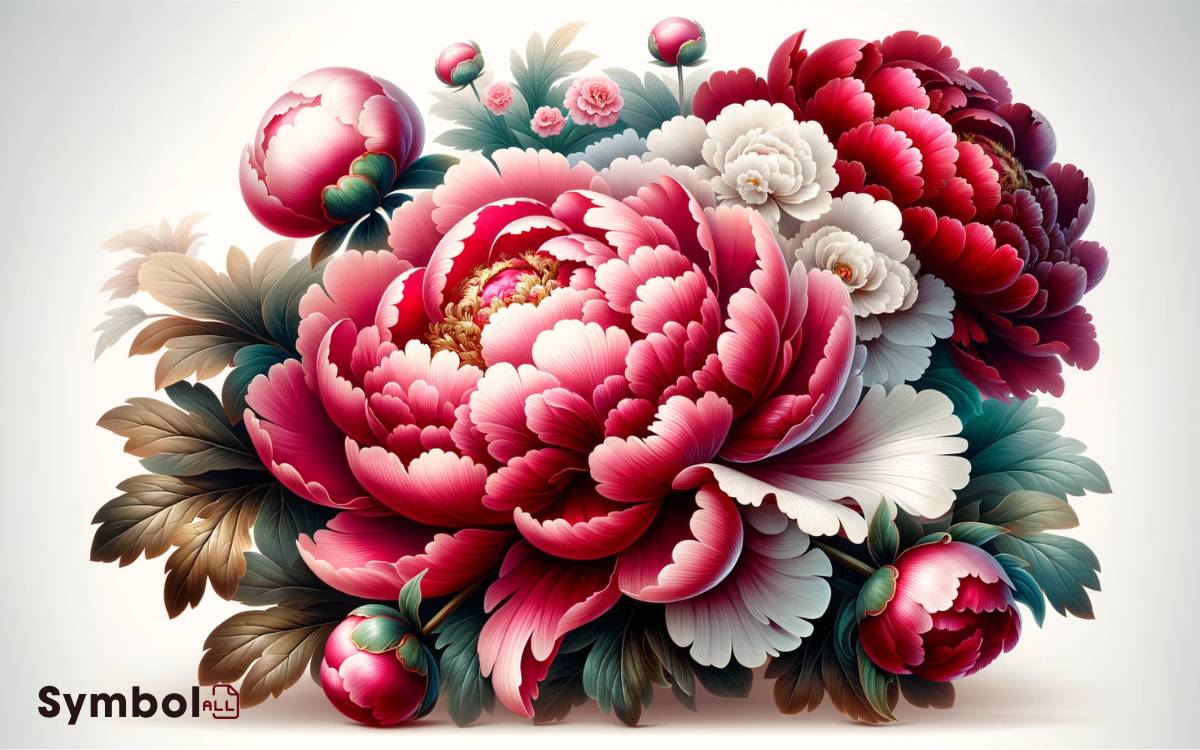
Shifting our focus from the clover’s ecological significance, we now turn our attention to the peony, a flower steeped in symbolism and regarded as a beacon of prosperity and good fortune.
Originating in Asia, the peony has permeated various cultures with its lush, voluminous blooms, symbolizing wealth and honor.
Scientifically known as Paeonia, this genus encompasses over 30 species, each unique yet universally recognized for its association with prosperity.
Botanically, peonies thrive in temperate regions, showcasing their resilience and longevity, which further contributes to their symbolism of lasting fortune.
Cultivation studies reveal that peonies prefer well-drained soil and partial sunlight, mirroring their need for a balanced environment to flourish.
This requirement underscores the peony’s role as a metaphor for thriving in favorable conditions, thereby enhancing its reputation as a harbinger of good luck.
Chrysanthemum: A Fortune Flower
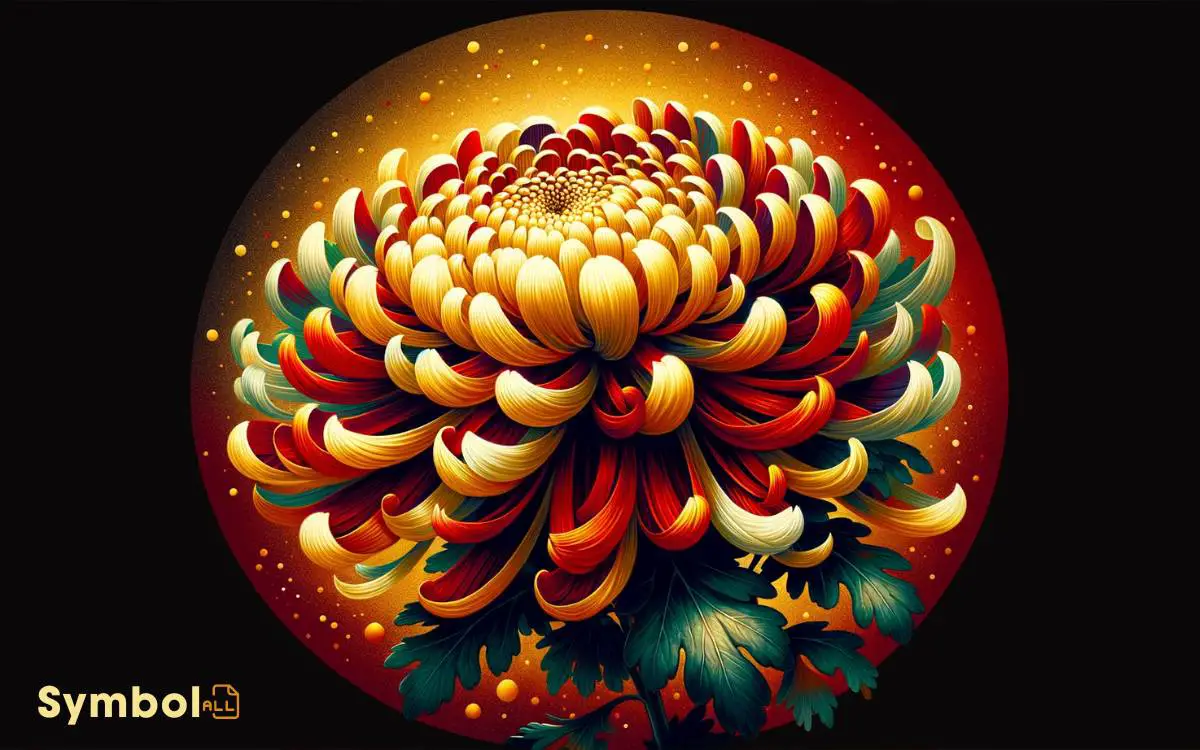
The chrysanthemum, often celebrated for its role in bringing good fortune, stands as a symbol of optimism and abundance across various cultures. This flower’s significance is deeply rooted in its botanical features and historical associations.
Here’s how you can appreciate its value:
- Biological Significance: Chrysanthemums exhibit a wide variety of colors, each symbolizing different aspects of luck and prosperity.
- Cultural Impact: In several Asian cultures, chrysanthemums are celebrated during the Festival of Happiness, symbolizing rest and ease.
- Historical Use: They’ve been used in traditional medicine for their purported health benefits, including reducing inflammation and improving heart health.
- Gardening Practices: Growing chrysanthemums can attract positive energy into your home, according to feng shui principles, enhancing your dwelling’s aura of prosperity and good fortune.
Understanding these aspects can deepen your appreciation for this auspicious flower.
Orchid: Elegance and Luck
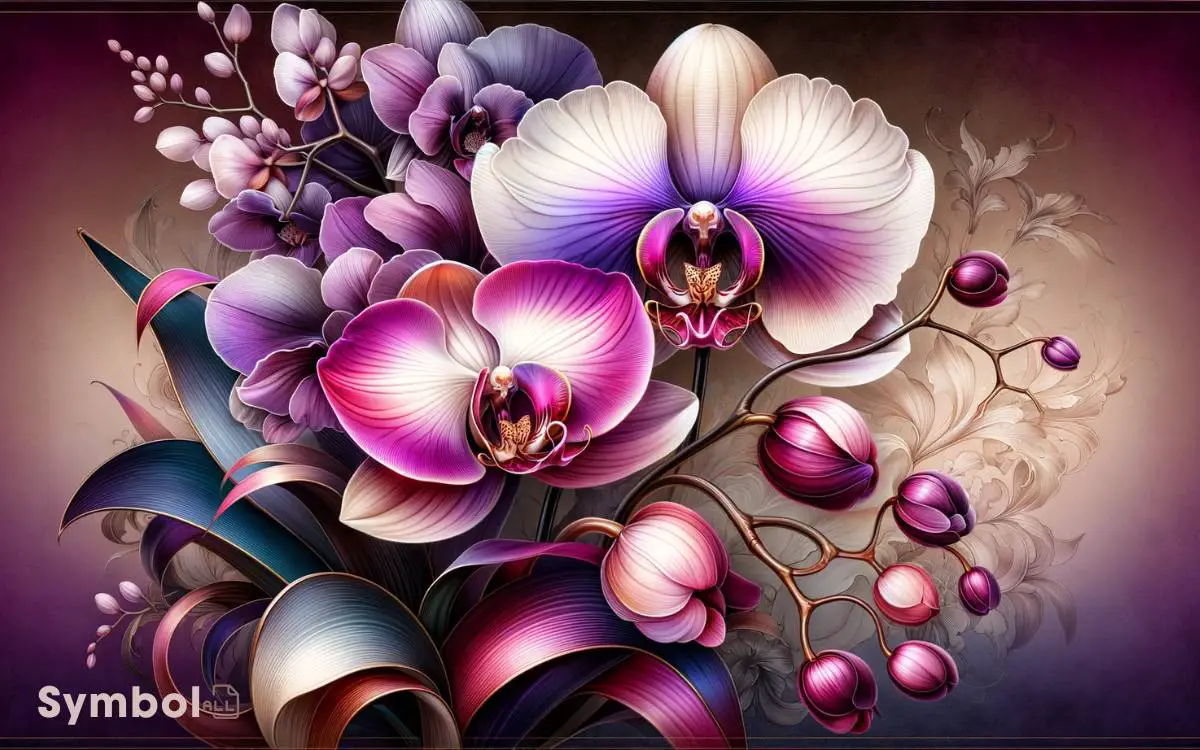
Orchids symbolize elegance and fortune, and they require specific care to thrive. Each variety of orchid has its unique care guidelines and luck-associated meanings.
Understanding these nuances ensures that your orchids not only prosper but also enhance their ability to bring good luck into your life.
This delicate flower demands attention to detail and a tailored approach to care. With the right knowledge and effort, you can cultivate healthy orchids that serve as symbols of beauty and good fortune in your home.
Orchid Care Tips
Caring for orchids requires understanding their unique environmental needs, ensuring they thrive and bring elegance and luck into your home.
Here are essential tips:
- Light: Orchids prefer indirect, bright light. Too much direct sunlight can damage their leaves, while insufficient light may hinder blooming.
- Watering: Over-watering is a common mistake. Water once a week, allowing the potting medium to dry out slightly between waterings.
- Humidity: These plants thrive in 40-70% humidity. Placing a humidifier nearby or a water tray beneath the pot can help maintain ideal conditions.
- Temperature: Maintain a stable environment with temperatures between 15°C and 29°C (59°F to 84°F). Avoid placing orchids near drafty windows or heating sources to prevent stress.
Adhering to these guidelines will help your orchids flourish, embodying both beauty and fortune.
Orchid Varieties Explained
Having mastered the basics of orchid care, it’s now time to explore the diverse world of orchid varieties, each with unique qualities that contribute to their reputation for elegance and luck.
Orchids, belonging to the vast Orchidaceae family, exhibit an extraordinary range of species, estimated at over 25,000. Among these, the Phalaenopsis orchid, often hailed for its beginner-friendly care and long-lasting flowers, symbolizes prosperity and peace.
Meanwhile, the Dendrobium orchid, known for its robustness and year-round blooming capacity, represents virtue and refinement. The rare and alluring Paphiopedilum, or lady’s slipper orchid, with its unique pouch-like lip, is often associated with wealth and well-being.
Each variety, through its distinct appearance and care requirements, holds a special place in the world of flora, embodying a blend of natural beauty and symbolic significance.
Lotus: Purity and Success

The lotus flower, revered for its ability to bloom in murky waters, symbolizes purity and success across various cultures. This remarkable plant, Nelumbo nucifera, demonstrates a fascinating phenomenon known as thermoregulation, maintaining temperatures to optimize pollination.
To deepen your appreciation, consider these aspects:
- Unique Habitat: Thrives in muddy, aquatic environments, symbolizing resilience and purity emerging from challenging conditions.
- Symbolic Colors: Different hues represent various attributes; white for purity, pink for enlightenment, and blue for wisdom.
- Cultural Significance: In Buddhism and Hinduism, it signifies spiritual awakening and purity of the body, speech, and mind.
- Biological Marvel: Exhibits the rare ability to regulate its temperature, akin to mammals, facilitating pollinator attraction.
Understanding these facets, you’ll grasp why the lotus epitomizes not just good luck, but a profound journey towards enlightenment and success.
Jasmine: Sweet Luck
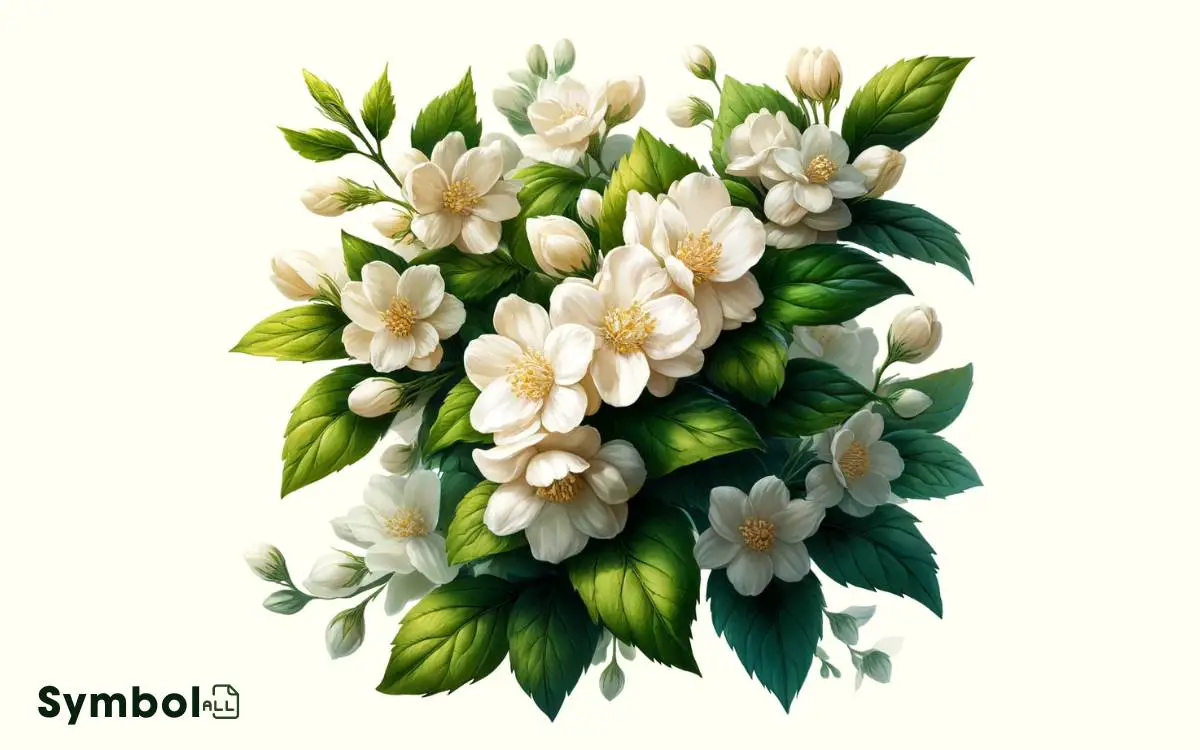
While the lotus captivates with its message of purity and success, jasmine, known for its intoxicating fragrance, symbolizes prosperity and good luck in various cultures. Jasmine’s significance is deeply rooted in its biological characteristics and historical uses.
This small, white flower, which blooms at night, releases a powerful, sweet scent that’s long been associated with positive energy and optimism.
Scientifically, jasmine is known to have several benefits, including stress reduction and mood improvement, which could contribute to its association with good fortune.
Culturally, it’s used in ceremonies and rituals around the world to attract good luck and love, reinforcing its symbolic meaning.
Jasmine’s ability to thrive in a variety of conditions also mirrors the resilience and prosperity it represents, making it a potent symbol of good luck and success.
Incorporating Lucky Flowers
Incorporating lucky flowers into your environment can greatly enhance your personal and professional spaces by leveraging their scientifically recognized benefits, such as stress reduction and mood improvement.
To effectively integrate these plants, consider the following strategies:
- Placement: Position flowers in areas where you spend most of your time to maximize their positive effects. Research suggests that visibility plays a key role in the psychological benefits.
- Selection: Choose species that thrive in your specific climate and lighting conditions, ensuring their longevity and sustained benefits.
- Variety: Incorporate a diverse range of lucky flowers to benefit from a wide spectrum of positive influences, from attracting good fortune to enhancing mental clarity.
- Care: Regular maintenance not only supports the health of the plants but also fosters a nurturing routine, contributing to personal well-being.
Conclusion
In the captivating domain of flora, you’ve just initiated on a scientific voyage, discovering flowers with powers beyond mere beauty. These aren’t just plants; they’re botanical alchemists, enhancing your luck with their mere presence.
Whether it’s the clover weaving prosperity with every leaf or the peony, radiating success with its petals, incorporating these blooms into your life doesn’t just bring good fortune; it propels you into a universe where luck and prosperity are as abundant as air.
Embrace these natural wonders, and observe as your world transforms into a veritable Eden of opportunity.






